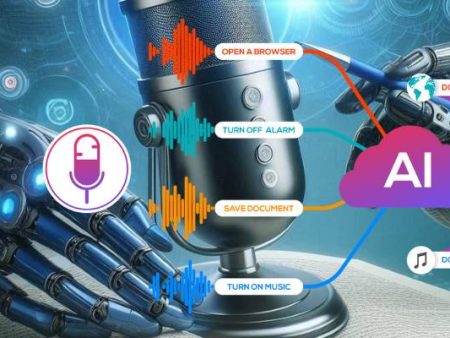Every once in a while, something comes along that doesn’t just tweak the rules—it rewrites the entire playbook.
For years, on-page SEO was mostly about keyword density, headings, internal linking, and meta tags. We followed checklists, debated character counts, and optimized alt text like our lives depended on it.
But 2025 feels different. AI isn’t just helping us with content—it’s redefining the very way we think about search.
That leaves us with some important questions: Does AI copywriting truly make SEO more effective? Is it a shortcut that risks generic content?
Or is it reshaping the future of how we interact with Google, Bing, and even TikTok search?
This isn’t just about tools; it’s about a paradigm shift.
On-Page SEO: What’s Really Changed?
If you rewind five or ten years, on-page SEO was rigid. You picked a primary keyword, sprinkled in variations, wrote 1,500 words, and prayed the search gods favored you. It was formulaic, and honestly, it worked.
Today, the algorithm is smarter. It doesn’t just read keywords—it understands content clusters and semantic connections.
It evaluates whether your article is authoritative enough to solve the query fully. And here’s the kicker: AI is now helping us meet those standards.
Does AI copywriting make this easier? In some ways, yes. AI tools can suggest related queries, generate long-form drafts, and analyze what competitors are doing.
But the catch is that everyone has access to the same technology. If all of us use AI the same way, aren’t we back to producing the same cookie-cutter content?
The Debate: Are We Losing Originality?
This is where the debate: are AI-driven pages really better than those written solely by humans?
On one side: advocates who argue AI allows for deeper coverage of topics, faster updates, and better technical compliance with SEO standards.
They point to the fact that AI can instantly scan SERPs and generate optimized headings, summaries, and schema that humans might overlook.
On the other: critics who warn that AI homogenizes the web. Content starts to sound the same. Emotional nuance gets lost.
The search results may become efficient, but sterile—pages optimized to death but lacking a spark of originality.
Personally? I think both sides have a point. I’ve seen AI drafts that nail structure but feel lifeless, and I’ve seen human-first pages that ramble beautifully but miss SEO fundamentals. The magic happens in blending the two.
How AI Copywriting Shapes the Building Blocks of On-Page SEO
Let’s break down the specific areas where AI is changing the game.
- Title Tags and Meta Descriptions
AI can generate dozens of variations in seconds, tested against CTR data. Some studies (like those from Backlinko) show optimized titles can increase CTR by up to 10%.
But here’s the risk: AI sometimes favors formulas—“Discover How to…” or “Top 10 Ways to…”—which may feel generic. That works until every competitor is doing the same thing.
- Headings and Structure
AI excels at outlining. It knows Google likes H2s broken into logical flows and H3s that reflect related searches. It can even suggest related questions from “People Also Ask.”
The advantage? You build natural content clusters and semantic coverage, which signals authority.
The disadvantage? Again, sameness. The machine might suggest the same subheadings it gave your competitor.
- Internal Linking
One underappreciated AI skill is mapping internal links. Tools now identify anchor text opportunities and create natural pathways across pages, strengthening cluster strategies.
It’s efficient, but it still requires oversight. Misplaced links can hurt UX and send confusing signals.
- Content-Length and Depth
Here’s where AI shines. It can analyze the average word count of top-ranking pages and generate a draft that hits the sweet spot. Long-form, optimized, but not bloated.
Yet, if the draft is technically long but emotionally empty, it risks alienating readers.
Voice Search and the New SEO Frontier
One huge shift we can’t ignore: voice search and conversational AI queries. Nearly 50% of searches in 2024 were voice-driven according to Statista.
That means people aren’t typing “best Italian restaurant NYC”—they’re asking Siri, Alexa, or Google Assistant, “Where can I find a cozy Italian restaurant in Brooklyn with outdoor seating?”
This changes the shape of on-page SEO. AI tools can help optimize for natural language, anticipating questions instead of just keywords.
Pages structured with conversational headings (“What’s the best option for…?”) stand a better chance of ranking for voice.
But voice-driven search also raises deeper questions: are we writing for people, or for machines interpreting people?
The Role of Emotion and Storytelling
This is where I lean human-first. AI can outline and optimize, but storytelling still matters. Readers don’t just want facts; they want connection. They want to feel like the writer understands them.
I once tested two blog posts: one entirely AI-generated, one written by a human but polished with AI’s help. The AI-only version ranked decently at first but had a higher bounce rate.
The hybrid version not only ranked but kept readers engaged, with higher time-on-page metrics. That told me something: people still crave human nuance.
Does AI Copywriting Improve User Signals?
Here’s the million-dollar question: does AI copywriting actually improve the metrics Google cares about—CTR, dwell time, bounce rate, conversions?
- CTR: Yes, often. AI-generated titles and meta descriptions can increase clicks.
- Dwell time: Mixed. If content feels too robotic, readers leave quickly.
- Conversions: Depends on emotional depth. Call-to-actions still need a human touch.
So AI is an asset, but it’s not the full solution.
Risks: Where AI Can Backfire
Let’s not ignore the darker side. AI-generated content can:
- Hallucinate facts, inventing data that undermines trust.
- Over-optimize, stuffing too many keywords unnaturally.
- Lose brand voice, producing copy that feels generic.
- Create legal/ethical issues, if content plagiarizes or uses copyrighted phrasing.
This is why editing isn’t optional—it’s mandatory.
Hybrid Workflows: The Best of Both Worlds
So what’s the solution? Hybrid workflows.
- Use AI for drafting and outlining.
- Have humans refine tone, inject emotion, and verify facts.
- Let AI assist with technical aspects (schema, keywords, clusters).
- Keep humans in charge of brand voice and strategy.
In my view, this is the only sustainable way forward.
Future Outlook: SEO in 2025 and Beyond
Looking ahead, I see three trends converging:
- Adaptive content: AI will create real-time page variations depending on the user (device, location, query intent).
- Voice-first strategies: More emphasis on conversational queries and FAQ-style structures.
- Google’s counterbalance: Expect Google to release updates that penalize generic AI spam, forcing higher standards.
At that point, originality becomes more valuable than ever.
My Honest Take
Here’s where I’ll land this: AI is neither the villain nor the savior. It’s a tool—a powerful one—that’s shaking up the way we do SEO.
Used thoughtlessly, it creates bland, repetitive pages. Used wisely, it helps us build better-optimized, user-friendly content faster than ever before.
The trick is remembering that SEO is not just about algorithms—it’s about people. We write for humans first, machines second. If we forget that, no amount of optimization will save us.
Conclusion: Changing the Rules, Not the Goal
So yes, AI is changing the rules of on-page SEO—but not the goal. The goal remains the same: deliver the best possible answer to the searcher.
Whether through voice search, mobile-first indexing, or AI-enhanced workflows, the central question hasn’t changed: Did this page actually help the person who landed on it?
That’s the rule we can’t afford to forget.


